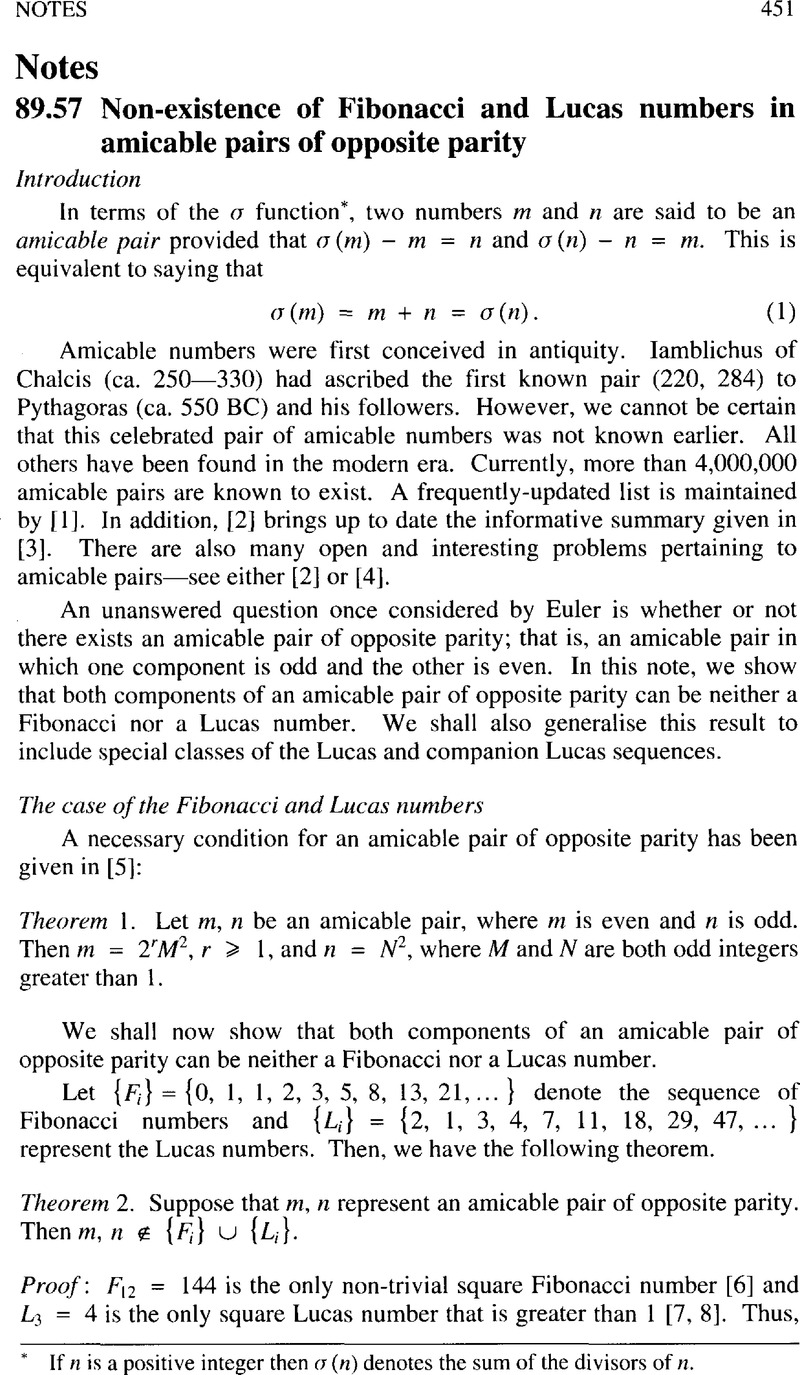No CrossRef data available.
Article contents
89.57 Non-existence of Fibonacci and Lucas numbers in amicable pairs of opposite parity
Published online by Cambridge University Press: 01 August 2016
Abstract
An abstract is not available for this content so a preview has been provided. Please use the Get access link above for information on how to access this content.

Information
- Type
- Notes
- Information
- Copyright
- Copyright © The Mathematical Association 2005
References
2.
García, M., Pedersen, J. M., and te Riele, H. J. J., Amicable pairs, a survey. In: High primes and misdemeanours: Lectures in honour of the 60th birthday of Hugh Cowie Williams, der Poorten, Alf van and Stein, Andreas (eds), Fields Institute Communications, Amer. Math. Soc. (2004) pp. 179–196,Google Scholar
3.
Lee, E. J. and Madachy, J. S., The history and discovery of amicable numbers, J. Ree. Math.
5 (1972) Part 1 pp. 77–93, Part 2 pp. 153–173, Part 3 pp. 231–249. Errata in 6, (1973) p. 53, p. 164 and p. 229.Google Scholar
5.
Gioia, A. A. and Vaidya, A. M., Amicable numbers with opposite parity, Amer. Math. Monthly, 74
8 (1967) pp. 969–973.Google Scholar
6.
Cohn, J. H. E., On square Fibonacci numbers, J. London Math. Soc.
39 (1964) pp. 537–541.Google Scholar
7.
Cohn, J. H. E., Square Fibonacci numbers, etc., Fibonacci Quarterly
2, (1964) pp. 109–113.Google Scholar
8.
Cohn, J. H. E., Lucas and Fibonacci numbers and some Diophantine equations, Proc. Glasgow Math. Assoc.
7 (1965) pp. 24–28.Google Scholar
9.
Dickson, L. E., Theorems and tables on the sum of the divisors of a number, Quart. J. Math.
44 (1913) pp. 264–296.Google Scholar
10.
McDaniel, W. L. and Ribenboim, P., The square terms in Lucas sequences, J. Number Theory
58 (1996) pp. 104–123.Google Scholar

